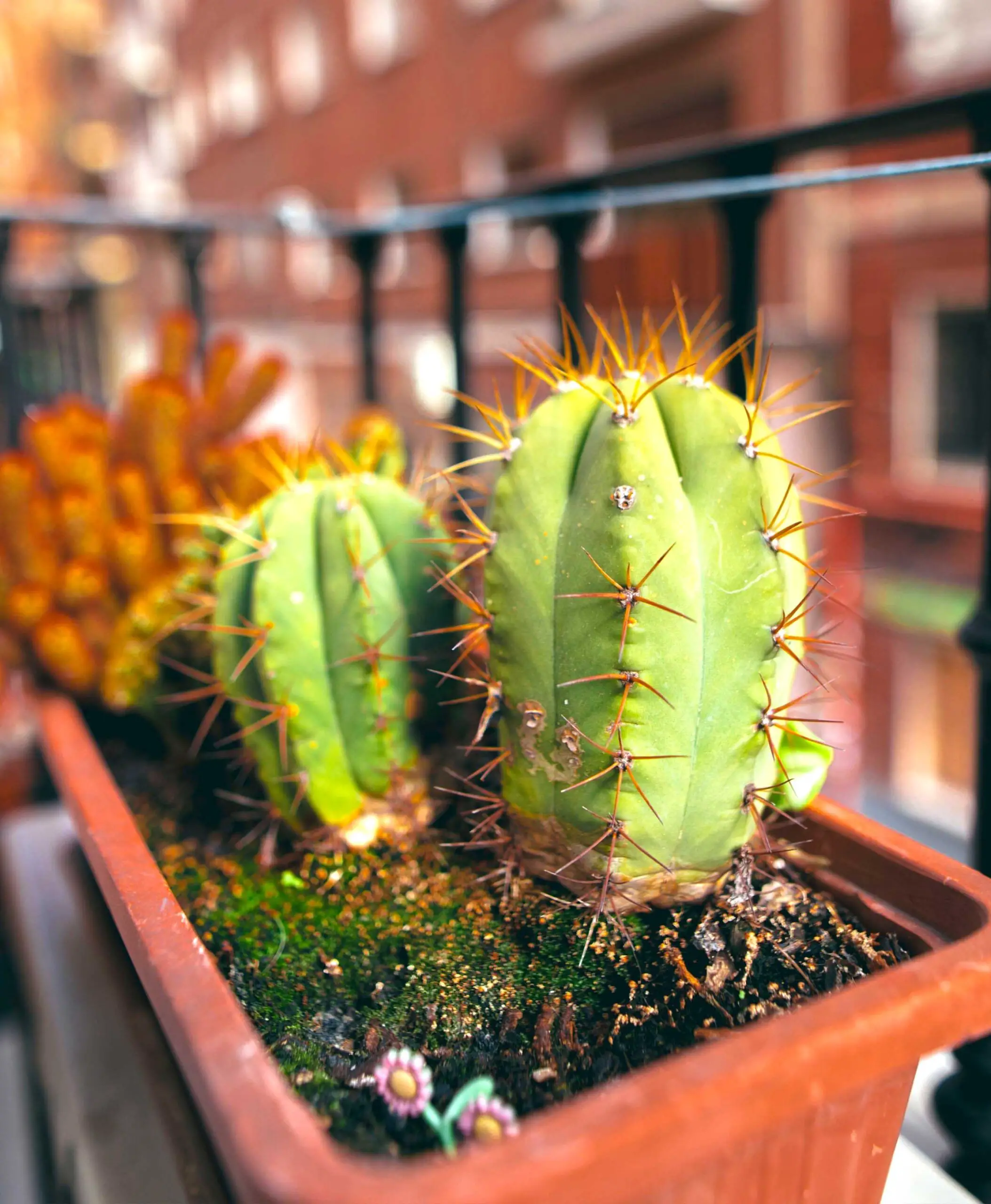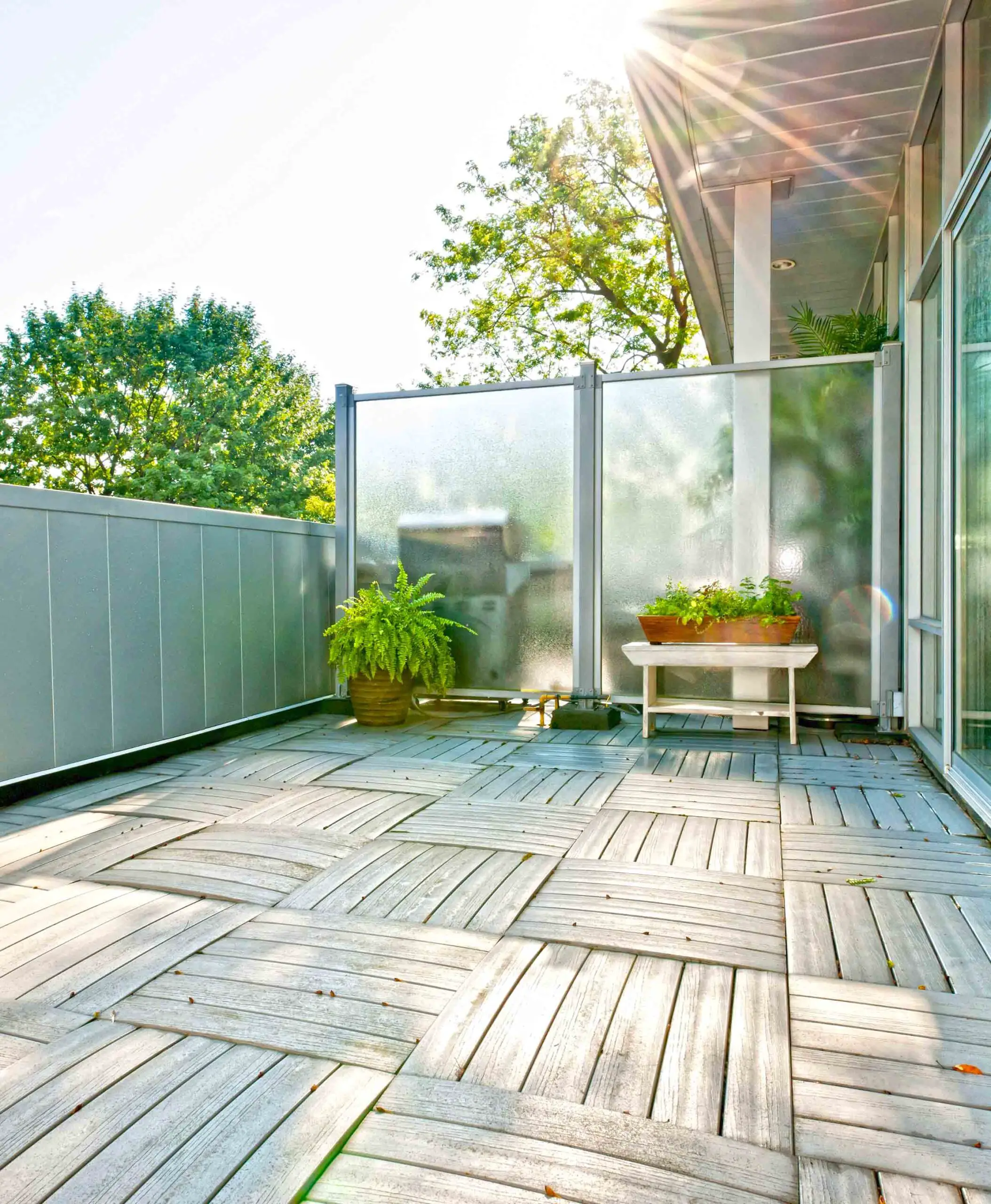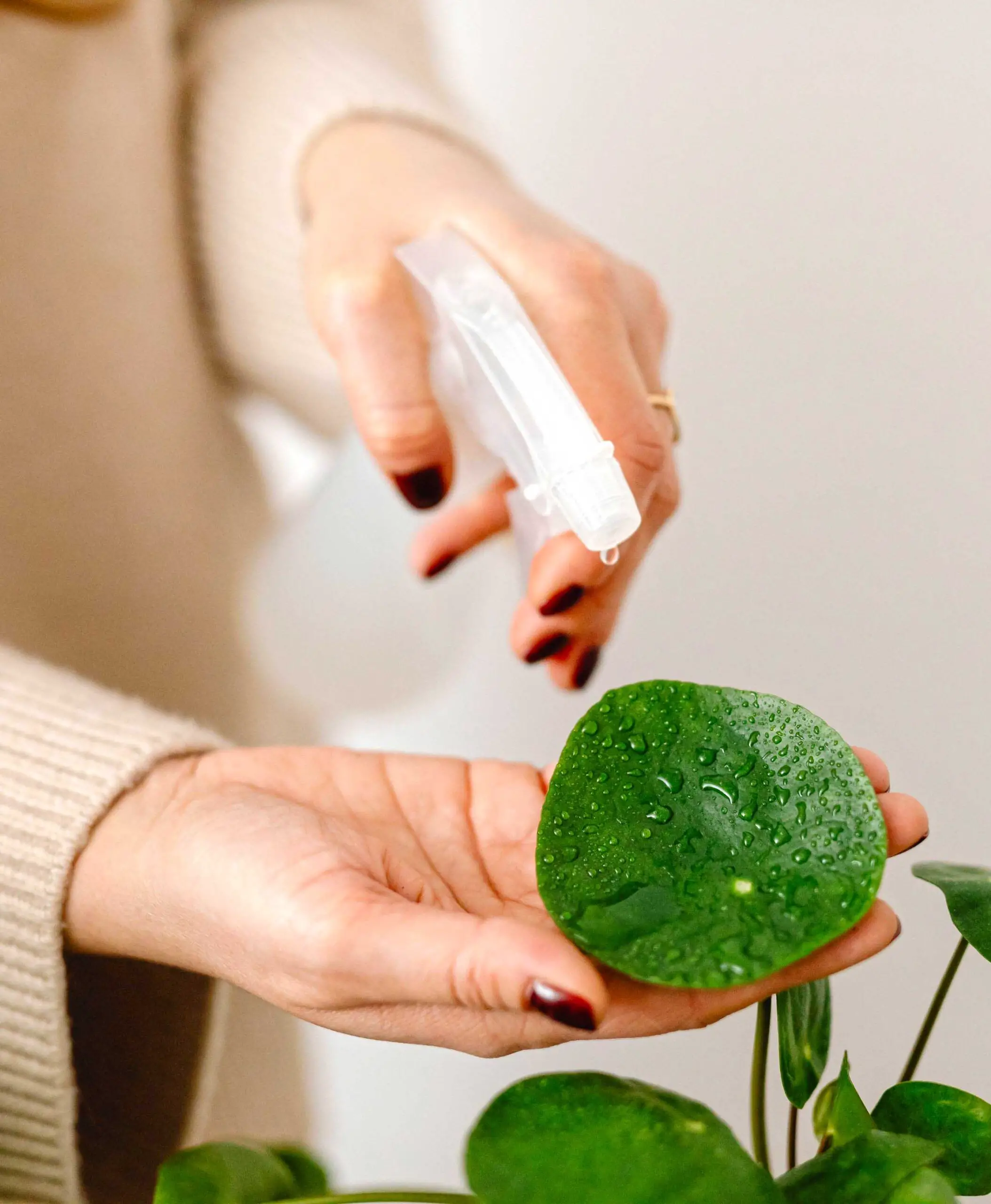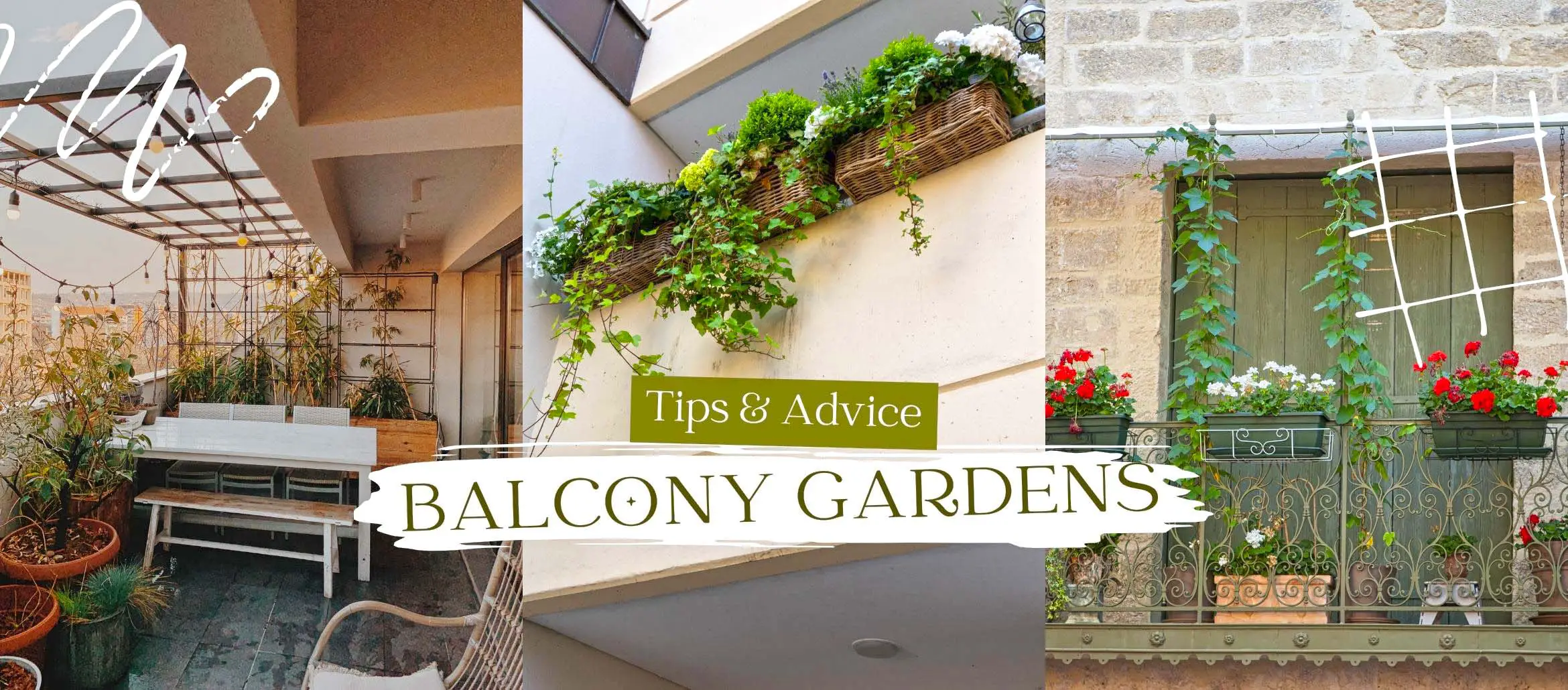Tips & Advice For Beautiful Balcony Gardens
Growing flowers is not as difficult as you think. As long as you learn the basics, you can keep flowers and plants healthy and beautiful. So don’t complain that you don’t have your own garden; you can actually grow flowers on your balcony. However, every balcony is different, so planting flowers on the balcony also requires skills. Here are some tips and advice for beautiful balcony gardening.
Tips & advice for beautiful balcony gardens
According to the characteristics of high-rise balconies, choosing varieties like light and drought tolerance is advisable.
Such as rose, jasmine, and cactus with more extended flowering periods. Drought tolerance fruits like pomegranate and oranges for fruit planting. You can also plant chrysanthemum, impatiens, celosia, dianthus, dahlia, and other herbal flowers. This will allow the balcony to have flowers in all seasons. Some shade-loving flowers can be grown indoors or in small sunny or short windows.
You should select different varieties of flowers for balconies in different directions.
On the east-west balcony, you can grow some vine flowers, such as honeysuckle, long hall vine, and morning glory. It helps to block the scorching sun, heat insulation, and cool down. You can plant it in pots.
On the north-facing balcony, it is appropriate to use shade-loving flowers, such as tiger thorn, evergreen, and hosta.
Also, to take full advantage of the limited balcony area, a ladder or a double-layered wooden frame can be set up on the wall, with sun-loving flowers on the upper layer and shade-tolerant flowers on the lower layer.
Pay attention to arranging flowers of different heights together to form a coordinated level. You can also use the cornice to firmly hang some small pots of flowers, such as Chlorophytum, hanging pot grass, etc. The scenery is relatively novel and fascinating.

Watering is an important part when growing flowers on a balcony.
Although the ventilation conditions for growing flowers on the balcony are good, the potting soil is easy to dry out, and half a day of dry wind can cause the flowers and leaves to wilt and droop. Also, especially in hot summer, if the light is too long, the flowers will die if you don’t water them in time.
The solution:
First, the balcony should be appropriately shaded in summer
Second, use larger pots for cultivation. Because the pots are large and hold a lot of water, it is not easy to dry up
Third, put the flower pots more densely, which can increase the humidity of the surrounding air
Fourth, water appropriately to keep the soil moist.
However, in summer, watering should be done every evening and should not be watered when the temperature is high at noon. You can spray water on the flower leaves and the nearby ground to maintain the humidity of the surrounding air. Frequent spraying of foliar water is an effective measure to keep flowers on the balcony.
Especially for orchids, rhododendrons, asparagus, etc., you should spray the leaves with more water. However, some potted trees, such as pomegranate, crape myrtle, begonia, etc., are not advisable to spray more water because spraying water will cause leggy branches and leaves to affect the appearance or reduce flowering and fruiting.
When the balcony is full of sunlight, it is conducive to the role of the plant as a light platform, but some flowers should not expose to the sun although they like light, so they should be placed behind the larger plant-shaped potted flowers.
In addition, balconies are mostly cement structures. After the scorching sun, the temperature rises very high, which will burn the roots of the potted flowers. You can put a wooden board under the flowerpot to insulate the heat.
It is also crucial to protect flowers from cold and winter.
Especially for low-temperature chilling plants, such as Milan, jasmine, asparagus, cactus, and fruit plants, such as kumquats, oranges, etc., must protect from cold. They cannot withstand the cold below 0 °C, and better to move indoors in late November.
In winter, plants are dormant or semi-dormant, and their growth is slow. Therefore, it would be best if you controlled watering. Generally, watering is done once every 3-5 days.
It is best to store them indoors for a day or two and wait until the water temperature rises. In winter, it is advisable to water in the morning on a sunny day.
Do not over-apply fertilizer to potted flowers, and stop applying fertilizer to dormant flowers.
You can build a simple flower rack with bricks and boards on south facing balcony. Place the potted flowers, and then tie several thin bamboo poles to the pillars of the balcony. Bend the upper end of the bamboo pole into a bow shape, cover it with plastic film, clamp it tightly and nail it firmly to make a greenhouse.
However, when placing potted flowers, they should be placed differently according to the adaptability of various flowers to temperature and light. For example, you can put warm Milan, jasmine, and multi pulp plants in the upper layer and azaleas, camellia, and asparagus in the middle layer. At the bottom and under the flower rack, put some shade-tolerant foliage plants, bonsai, or stake landscapes.
Precautions for planting flowers on the balcony

Illumination
Illumination is the sunlight’s orientation that affects the balcony’s illumination. It will help if you plant flowers and trees on the balcony according to the orientation of the balcony, the local climate conditions, and the habits of flower varieties.
The south balcony has strong light, more heat absorption, and significant transpiration. Therefore, it is suitable for planting sunny and drought-resistant flowers, such as cactus, gemstone flowers of succulent plants, petunia, dayflower, Scutellaria, Noctiluca, rose, pomegranate, and a string of red flowers, and iron trees.
The balcony facing to the North includes the corridor. Since there is no direct sunlight, it is unsuitable for planting sunny flowers. Only shade-loving and neutral flowers can be planted, such as begonia, asparagus, hanging bamboo plum, Commelina, turtle-backed bamboo, Chlorophytum, and ivy.
Water and air
The balcony is well ventilated, and the air is often dry, so watering is the key. We should pay attention to watering frequently and spraying water to the leaf surface and the ground.
The flowerpot should be large because it contains more soil and water, and it is not easy to dry. Or put the flowerpot into a shallow water basin, and the water can supply the flowers continuously due to capillary action. You can also put a basin of water around the potted flowers. Make it evaporate naturally and improve the local microclimate.
You should arrange the potted flowers on the balcony slightly denser. Because more potted flowers evaporate water together, the humidity of the surrounding air can be increased.
Temperature
The balcony is generally a cement floor and wall. When the sun shines, the temperature rises due to the reflection of cement, especially on the balcony facing the West. The balcony is full of sunshine in the afternoon and the temperature increases. This radiation is harmful to growth. Therefore, you can spray water on the balcony. When the water evaporates, it can take some heat away.
Wind
The wind is flowing air, and plants need this environment for growth. However, the too strong wind often causes damage to plants. When the wind is too strong, you can properly install the windbreak.
Other
For example, when buying flowers and trees, pay attention to the capacity of the balcony, and match the size of the plants with the direction and color of the balcony.
Popular gardening myths disproved

Myth 1: often spray water on the leaf surface
The vast majority of flowers have relatively high requirements for air humidity. However, the balcony is dry and has no air, and the relative humidity cannot meet the requirements for flower growth.
Therefore, some people advocate spraying water on the leaves daily to increase the humidity. However, it is challenging to create a good humid environment, and it is easy for the flowers to produce bacteria.
- Frequent spraying water, especially tap water, makes the leaves easy to yellow.
- Frequent spraying of water will shorten the flowering period and make the flowers easy to dry.
The best way to increase the humidity is to close the balcony with extra beds, lay coarse sand or sawdust on the place where the potted flowers are placed, and always keep the wet state.
In this way, you can narrow the gap between the balcony and the ground environment. The potted flowers can only grow generally in a balanced wet environment.
Myth 2: flowers that love the shade do not shine on the sun
Negative flowers are not directly exposed to the sun. Flowers can be divided into positive, negative, and half negative. However, some people even understand that negative flowers are placed in half shade or the dark for a long time. In fact, this is a misunderstanding.
As long as it is not strong light, you can keep semi-negative flowers such as camellia and Clivia in the dark for a long time. However, if flowers are kept in the dark for a long time, they will be weak and easy to get sick, and it won’t be easy to set buds and blossom.
Myth 3: frequently move the placement position
Some gardeners think that to avoid adverse factors such as air drying in spring, sunshine in summer, irritability in autumn, and low temperature in winter, they frequently change the placement.
Changing the placement frequently is most likely to disrupt the growth law of flowers and affect the normal growth and flowering. The balcony needs a stable room temperature and light for flower cultivation. Most pot flowers should not change their positions easily.
Myth 4: the closed balcony is not ventilated
At present, many balconies are closed, and the ventilation of the balcony is essential. The flowers are “stuffy” on the balcony. Although the temperature and humidity are guaranteed, the ventilation is poor, and the air is not smooth.
We can learn from the ventilation method of the kitchen. First, install a small ventilation fan in the balcony window, and open it twice a day, which can not only ventilate but also reduce the temperature of the balcony.





